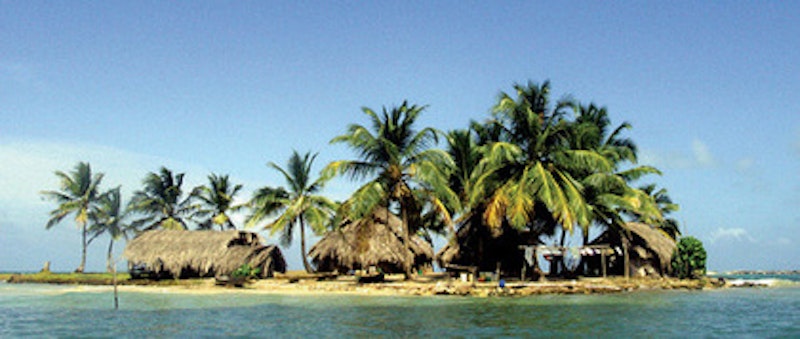"I am taken by the myth of the Kuna tribe, at one with nature, in perfect balance and harmony. Miles away from the pressures of globalization, these people have carved out a sustainable existence based on coconuts, fresh fish, and local crafts.
On our final day in the San Blas, Domi wakes us up early and declares that we will visit the community. I am thrilled to see the life force of this impressive region. As our canoe docks at the tiny island, I immediately notice the hundreds of children. We walk down the dust-covered street between the rows of bamboo huts. It seems the entire community has come to greet us.
The children sport western outfits, belly tops, jewellery, some even have Ipods. Almost every girl over the age of twelve is pregnant. A cross looming at the end of the main street proves that the animistic traditions of the Kuna have long been put to rest. I look harder at the children. There is a glazed look in their eyes. One girl stumbles past me, a pop can in one hand, and a comb repeatedly pulled through her greasy hair. She must be about nine years old. I look closer. She’s high. On gasoline. I look around the crowd of children before us. They’re all high. Some of the adults too. I look at Domi who refuses to meet my eyes, a heartbroken look on his face. On our way back to the canoe, we spot a larger boat, docked at bay. Columbian drug runners on their way up the coast to Carti.

